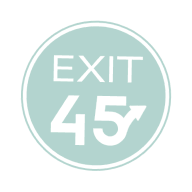Business Acquisitions That Cannot Be Financed
In the last issue (#60) we discussed one of the most commonly encountered obstacles to the sale of a business – Owners with Unrealistic Price Expectations. This issue will discuss another frequently encountered obstacle – Business Acquisitions that Cannot be Financed.
“A bank is a place that will lend you money if you can prove that you don’t need it.” Bob Hope
Business Acquisitions That Cannot Be Financed
Some prospective sellers think a prospective buyer is just going to write them a check for the full price of the business. That is the rare exception indeed!
Almost all prospective buyers will pursue financing for their business acquisition. But there are pitfalls that prevent financing and they tend to parallel the potential obstacles to a sale.
Pitfalls to lender-financed acquisitions
Prior to September of 2008, business acquisition financing was much more readily available than it is today. Before the credit crunch in the fall of 2008, qualified buyers could obtain a Small Business Administration (SBA) loan for the purchase of a business that was reasonably priced in relation to its Sellers Discretionary Earnings (SDE) with a 15% to 20% down payment. The most common pitfalls at that time were:
1) Inadequate SDE
2) Business not priced right in relation to its SDE
3) Buyer with insufficient cash for the down payment and working capital needs of the business
4) Buyer with inadequate experience in the industry
5) Business with too high of a customer concentration
6) Current year’s interim financial statements indicate decreasing operating results versus historical financial statements
7) Buyer unable to secure a lease term to match the loan term
Underwriting criteria is much more restrictive since September 2008
Prior to the credit crisis in September 2008, it was usually possible for prospective buyers to obtain SBA loans without the seller participating in the financing of an acquisition. After that crisis, the SBA underwriting criteria is now much more restrictive. In addition, the SBA is currently requiring a prospective buyer to have a higher level of direct industry experience, down payment requirements have increased and it’s more difficult to finance the goodwill portion (business enterprise value in excess of hard asset value) of a business acquisition. In addition the debt service coverage ratios have increased. (Debt service coverage is the excess of SDE less the new owner’s salary, less the annual loan payment on the acquisition loan.)
Most lenders prefer transactions larger than $250,000
Historically, it’s been difficult to obtain financing for business acquisitions under about $125,000 for two reasons: (1) SDE is insufficient to enable a prospective buyer to pay himself enough to meet his other financial obligations. As a result, there’s not enough left over for debt service coverage. (2) Lenders prefer larger deals to smaller deals
In today’s lending environment, most SBA lenders are unwilling to consider transactions less than about $250,000 (which requires about $100,000 of SDE). Again, there are two reasons: (1) with ever-increasing requirements, it is difficult to achieve adequate debt service coverage ratios at SDE less than $100,000. (2) With tightening credit standards, lenders are being much more selective of transactions they will consider, with minimums often set at $250,000 for business acquisition financing.
Financing pitfalls tend to parallel obstacles to the sale of a business
With a better understanding of lenders’ requirements, you can see why Inadequate Seller’s Discretionary Earnings (SDE) is one of the primary obstacles to a sale. Of the seven financing pitfalls listed above, all but number 4 are also obstacles to a successful sale of a business.
Seller financing can be minimized
To put it simply, prior to September of 2008 an owner could sell his business without having to “carry any paper.” In the new economic environment, owners are much more likely to be asked to provide some seller financing. That’s the bad news. The good news: in many instances, seller “carry back” can be limited to about 10% of the purchase price.
However, if other financing pitfalls/business sale obstacles are encountered, the percentage of seller financing required to complete a transaction will increase. That’s why it is so important to identify obstacles to a successful business sale. Once identified, you can address the issues and likely reduce the amount of seller financing that will be required when it’s time to sell your business.
It's the constant and determined effort that breaks down all resistance, sweeps away all obstacles." Claude M. Bristol
Overcome the Power of Inertia
Overcome the Power of Inertia and call a business broker for a free consultation. Many brokers offer no-charge, no-obligation evaluations of small businesses. They can provide a broker opinion of value and help you identify obstacles to a successful sale as well as opportunities for improvement to increase the value of your business. That is a great way to start planning for a successful and profitable exit from your business.

